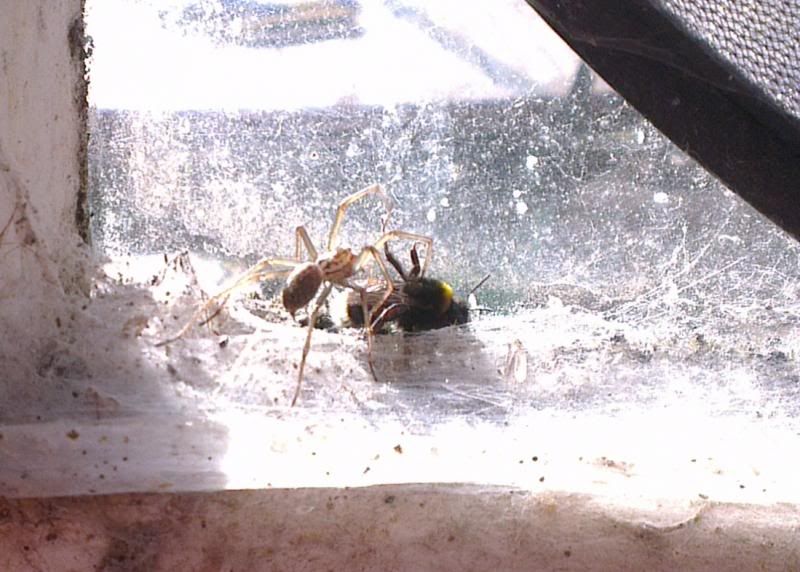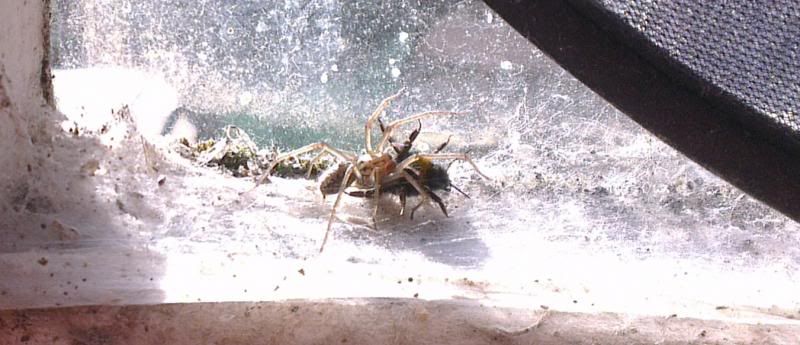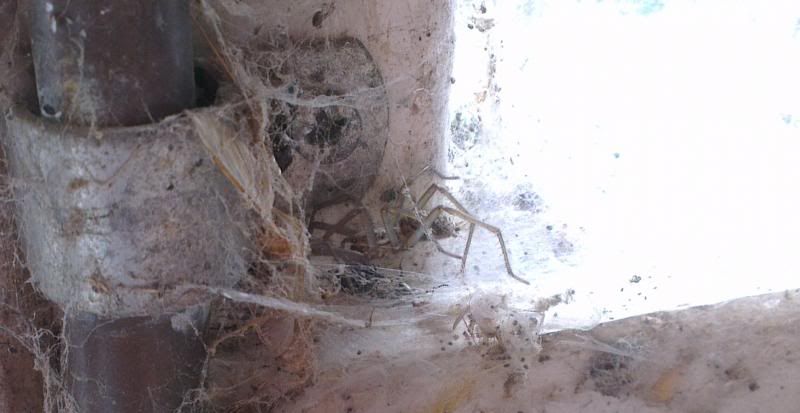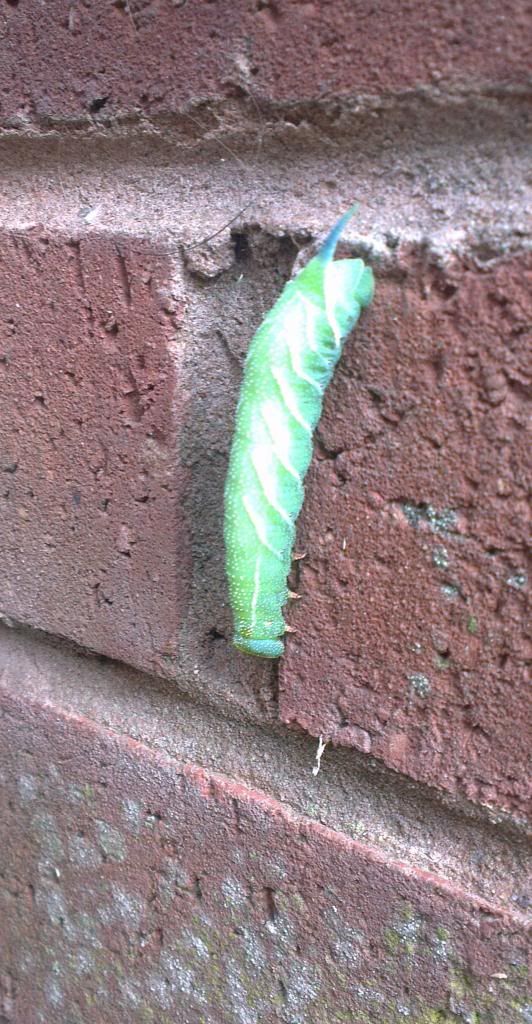The "What is this bug?" thread
- Thread starter Harvestman
- Start date
-
Come along to the amazing Summer Moot (21st July - 2nd August), a festival of bushcrafting and camping in a beautiful woodland PLEASE CLICK HERE for more information.
You are using an out of date browser. It may not display this or other websites correctly.
You should upgrade or use an alternative browser.
You should upgrade or use an alternative browser.
Looks like a rather battered green veined white to me Red.
Have a look here and see what you think.
http://www.ukbutterflies.co.uk/species_family.php?name=Pieridae
Could be...veins seemed darker to me...
Red, try Black veined white instead. That's a migrant and not a native, but is possible. Wood white usually has the veined much less well marked out.
I don't know, mentally I can't make it out as a Wood white, but then I'm no expert. I'll pass your picture to a butterfly expert for an opinion.
I don't know, mentally I can't make it out as a Wood white, but then I'm no expert. I'll pass your picture to a butterfly expert for an opinion.
Last edited:
Great stuff, going to grow into a right monster then 
This few are a bit of a battle I witnessed today whilst bow making. Its hard not to step in but tooth n claw n all.
Right mean old bugger



The spider had a few attacks and bits then calmly stood off for a minute. Then just went in with a final "coup de grace" and dragged dinner home.
This few are a bit of a battle I witnessed today whilst bow making. Its hard not to step in but tooth n claw n all.
Right mean old bugger



The spider had a few attacks and bits then calmly stood off for a minute. Then just went in with a final "coup de grace" and dragged dinner home.
Tegenaria house spiders are pretty fierce when roused, but a bumble bee is no lightweight opponent. That must have been some battle.
For the battle to take place though the bee must have either been partially tangled already or else pretty weakened, and most probably both, so the odds were stacked in the spider's favour.
Either way, you were wise not to intervene between two battling females
For the battle to take place though the bee must have either been partially tangled already or else pretty weakened, and most probably both, so the odds were stacked in the spider's favour.
Either way, you were wise not to intervene between two battling females
Yep, I think you have it with Black Veined
If so it might be an interesting record. I'll see what my expert thinks, but I know he said that this is a poor year for migrants when I saw him last week.
Tegenaria house spiders are pretty fierce when roused, but a bumble bee is no lightweight opponent. That must have been some battle.
For the battle to take place though the bee must have either been partially tangled already or else pretty weakened, and most probably both, so the odds were stacked in the spider's favour.
Either way, you were wise not to intervene between two battling females
Must admit there has been generations of spiders in that spot. Dark workshop and only one window that she has cornered.
The Bee i think is from a hive next door that has taken over a bird box. It was a right old battle and i would have put money on the bee but the spider looked so cool from the off and all the way through till the end.
Must admit there has been generations of spiders in that spot. Dark workshop and only one window that she has cornered.
The Bee i think is from a hive next door that has taken over a bird box. It was a right old battle and i would have put money on the bee but the spider looked so cool from the off and all the way through till the end.
Bees are designed to fight and subdue nectar and pollen. Spiders are designed to kill things. My money is on the spider every time.
Bees are designed to fight and subdue nectar and pollen. .
Tell that to my buddies hive - a mouse got in in the Winter - they killed it and walled it up as they couldn't move it!
That bee is a bumble bee rather than a true "hive" honey bee by the way. I would say likely Bombus hypnorum if it came from a bird box. Unknown in Britain till 2001. Its thorax is more yellow than I would have expected though so may be another species - def. a Bombus though
Oh yes, definitely a Bombus. I just assumed B. terrestris and didn't think anything of it. Not the easiest group of insects to identify, as the man from Bumble Conservation told me today. 
In one photo the thorax stripe looks quite gingery and there is I feel white hair markings at the base of the abdomen, that with the size made me think hypnorum (plus they are renowned for colonising bird boxes). In another photo, the thorax looks more bright yellow which makes me doubt myself.
I'll stick with Bombus terrestris having had a look, but to be honest there's no way to be certain of anything from those pictures. B. praetorum is another bird box coloniser that it could be, although that is usually quite a small bee,
Will see if i have any clearer shots of the bubmle. The ones posted were all cropped as I didnt want to get to close and disturb the battle,
Tell that to my buddies hive - a mouse got in in the Winter - they killed it and walled it up as they couldn't move it!
That bee is a bumble bee rather than a true "hive" honey bee by the way. I would say likely Bombus hypnorum if it came from a bird box. Unknown in Britain till 2001. Its thorax is more yellow than I would have expected though so may be another species - def. a Bombus though
By this do you mean that the term "hive" is only a term for a honey bee dwelling? Know next to nothing about bees.
Lime Hawk-Moth caterpillar?



Found under my hammock , between two lime trees
Sent from my HTC One using Tapatalk 4



Found under my hammock , between two lime trees
Sent from my HTC One using Tapatalk 4
By this do you mean that the term "hive" is only a term for a honey bee dwelling? Know next to nothing about bees.
Literally a dwelling of any of the genus "Apis" (bumblebees are "bombus")...but yeah "honey bee house" (natural or manmade) is a "hive"
Hi Red, I'm afraid my butterfly expert has come back and confirmed my original identification of your butterfly - a tatty green veined white.
It was a really nice picture though.
It was a really nice picture though.
\chiseller, the answer to your question is yes, it is a lime hawkmoth, as far as I can tell.
A quote for the UKmoths website"The larvae feed on lime (Tilia) as well as a number of other deciduous trees including birch (Betula), alder (Alnus) and elm (Ulmus). They are typically green with yellow stripes and a blue horn at the rear. When ready to pupate, they change colour to a dull greyish or purplish and begin to wander, looking for a pupation site. This is when they are most often encountered."
A quote for the UKmoths website"The larvae feed on lime (Tilia) as well as a number of other deciduous trees including birch (Betula), alder (Alnus) and elm (Ulmus). They are typically green with yellow stripes and a blue horn at the rear. When ready to pupate, they change colour to a dull greyish or purplish and begin to wander, looking for a pupation site. This is when they are most often encountered."
Similar threads
- Replies
- 58
- Views
- 6K
- Replies
- 0
- Views
- 683
- Replies
- 2K
- Views
- 369K

